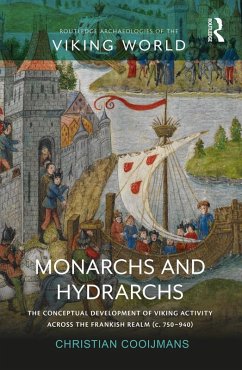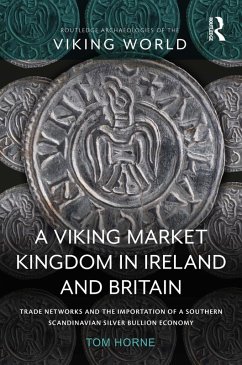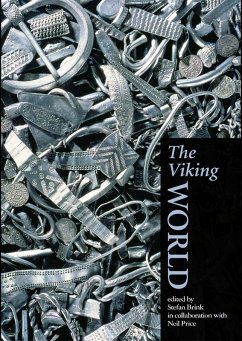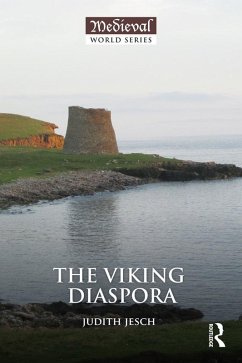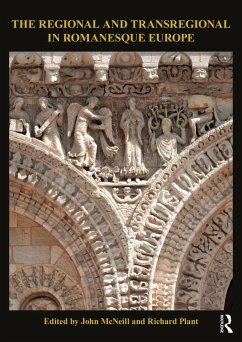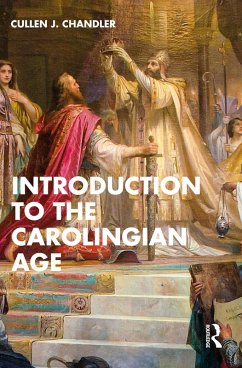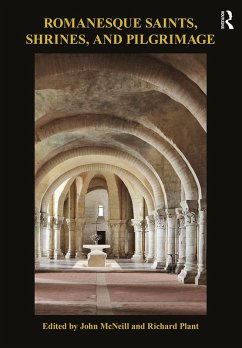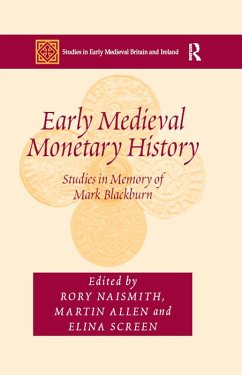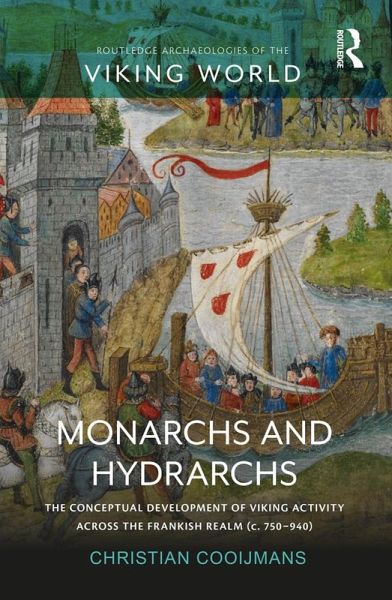
Monarchs and Hydrarchs (eBook, ePUB)
The Conceptual Development of Viking Activity across the Frankish Realm (c. 750-940)
Versandkostenfrei!
Sofort per Download lieferbar
42,95 €
inkl. MwSt.
Weitere Ausgaben:

PAYBACK Punkte
21 °P sammeln!
As the politico-economic exploits of vikings in and around the Frankish realm remain, to a considerable extent, obscured by the constraints of a fragmentary and biased corpus of (near-)contemporary evidence, this volume approaches the available interdisciplinary data on a cumulative and conceptual level, allowing overall spatiotemporal patterns of viking activity to be detected and defined - and thereby challenging the notion that these movements were capricious, haphazard, and gratuitous in character.Set against a backdrop of continuous commerce and knowledge exchange, this overarching survey...
As the politico-economic exploits of vikings in and around the Frankish realm remain, to a considerable extent, obscured by the constraints of a fragmentary and biased corpus of (near-)contemporary evidence, this volume approaches the available interdisciplinary data on a cumulative and conceptual level, allowing overall spatiotemporal patterns of viking activity to be detected and defined - and thereby challenging the notion that these movements were capricious, haphazard, and gratuitous in character.
Set against a backdrop of continuous commerce and knowledge exchange, this overarching survey demonstrates the existence of a relatively uniform, sequential framework of wealth extraction, encampment, and political engagement, within which Scandinavian fleets operated as adaptable, ambulant polities - or 'hydrarchies'. By delineating and visualising this framework, a four-phased conceptual development model of hydrarchic conduct and consequence is established, whose validity is substantiated by its application to a number of distinct regional case studies. The parameters of this abstract model affirm that Scandinavian movements across Francia were the result of prudent and expedient decision-making processes, contingent on exchanged intelligence, cumulative experience, and the ongoing individual and collective need for socioeconomic subsistence and enrichment.
Monarchs and Hydrarchs will appeal to both students and specialists of the Viking Age, whilst serving as an equally valuable resource to those investigating early medieval Francia, Scandinavia, and the North Sea world as a whole.
Set against a backdrop of continuous commerce and knowledge exchange, this overarching survey demonstrates the existence of a relatively uniform, sequential framework of wealth extraction, encampment, and political engagement, within which Scandinavian fleets operated as adaptable, ambulant polities - or 'hydrarchies'. By delineating and visualising this framework, a four-phased conceptual development model of hydrarchic conduct and consequence is established, whose validity is substantiated by its application to a number of distinct regional case studies. The parameters of this abstract model affirm that Scandinavian movements across Francia were the result of prudent and expedient decision-making processes, contingent on exchanged intelligence, cumulative experience, and the ongoing individual and collective need for socioeconomic subsistence and enrichment.
Monarchs and Hydrarchs will appeal to both students and specialists of the Viking Age, whilst serving as an equally valuable resource to those investigating early medieval Francia, Scandinavia, and the North Sea world as a whole.
Dieser Download kann aus rechtlichen Gründen nur mit Rechnungsadresse in A, B, BG, CY, CZ, D, DK, EW, E, FIN, F, GR, HR, H, IRL, I, LT, L, LR, M, NL, PL, P, R, S, SLO, SK ausgeliefert werden.




